Reservoir positions itself as a “next-generation stablecoin protocol,” offering rUSD (stablecoin), srUSD (floating yield), trUSD (term yield), and permissioned lending. It claims native cross-network mint/redeem and multi-asset collateralization. The protocol uses a Credit Enforcer, a Peg Stability Module (PSM), and real-time Proof of Reserves to maintain robustness and liquidity; the governance token is DAM. This Token Insights article analyzes its technical features, tokenomics, ecosystem partners, and future roadmap.
Summary: Reservoir combines “multi-asset + real-time reserves + compliance modules” to support rUSD’s 1:1 mint/redeem and yield distribution; DAM governs parameters. Contracts and audits are public; the ecosystem is integrating lending and cross-chain support.
What is Reservoir?
Reservoir is a stablecoin protocol deployed on Ethereum with native multi-network support. Its product suite includes rUSD (stablecoin), srUSD (floating-rate deposit), trUSD (fixed-term coupon), and a permissioned lending market. It aims to balance five axes—decentralization, stability, capital efficiency, scalability, and usefulness—which it calls the “Pentalemma.” Compared with “1.0” stablecoins, Reservoir emphasizes diversified collateral (on-chain/off-chain assets) and passing real yield back to holders, while designing cross-chain circulation from day one.
What are rUSD’s key features?
rUSD is an ERC-20 that can be minted/redeemed 1:1 against USDC and is open to non-U.S. users in non-sanctioned regions. It supports on-demand mint/redeem, lending, and cross-chain usage.
How do Reservoir’s tech and risk controls deliver a “scalable stablecoin”?
The core triad: Credit Enforcer, Peg Stability Module (PSM), and real-time Proof of Reserves.
-
Credit Enforcer acts as a fiscal constraint engine: any leverage-increasing action must pass minimum liquidity, asset, and equity ratio checks, or the transaction reverts—preventing asset/liability imbalance.
-
PSM targets short-term liquidity and peg: the system automatically maintains a minimum USDC balance in each chain’s PSM (official example: $1.2M) and tops it up every 10 minutes to strengthen redeemability and peg confidence.
-
Proof of Reserves displays a live balance sheet (assets/liabilities/equity). Yield from on-chain strategies and RWA is distributed to srUSD/wsrUSD/trUSD under published rules.
How do srUSD and trUSD share roles?
-
srUSD accrues floating yield via a gradually appreciating price; redemption is at or above the entry price.
-
trUSD provides fixed terms and coupons—an “on-chain term deposit” (ERC-1155 per tranche)—to channel RWA/DeFi funding needs.
What does the DAM token do, and how about supply & distribution?
Utility & powers
Docs state governance is DAO-controlled by token holders—covering srUSD rates, asset adapters, and risk parameters. Contract addresses are published under “Smart Contract Addresses” for on-chain verification.
Supply & float
CoinMarketCap lists a 1B DAM cap with ~200M circulating (~20%). Project channels indicate DAM is used for governance and ecosystem incentives (e.g., staking/points), subject to future proposals and notices.
Security & compliance
The protocol reports four audits (core protocol, Morpho lending, LayerZero cross-chain, wsrUSD & rebalancer), reducing systemic integration risk. With public contracts, audit records, and a real-time balance sheet, Reservoir offers a verifiable surface; DAM’s value anchor depends on protocol scale and governance efficacy.

Where do the product loop and ecosystem integrations show up?
Lending & leverage: Reservoir’s lending market will launch via Morpho (with Steakhouse support), allowing multi-asset collateral to mint rUSD at variable or fixed rates—forming a “mint → earn → re-collateralize” loop.
Multichain & cross-domain: Docs list OFT support and addresses for rUSD/srUSD/wsrUSD across networks—suggesting “multi-network front-end mint/redeem, centralized risk controls back-end.”
Asset adapters & RWA: Adapters span DeFi yield, MM/money markets, crypto-backed credit, and layered RWA; governance handles diligence and limits.
Can the “reserves → yield → distribution” chain be verified?
Users can track positions, PSM balances, and distribution rules via the Proof of Reserves dashboard and contracts, cross-checking with audit reports and on-chain addresses.
How to evaluate Reservoir’s competitive stance and risk boundaries?
Positioning
Multi-collateral + real yield + cross-chain mint/redeem, with srUSD/trUSD splitting short-term liquidity vs. term yield—aiming to balance stability and scale.
Key risks:
-
RWA/on-chain strategy counterparty & repayment risk;
-
Cross-chain bridge/OFT dependencies;
-
Governance efficiency and disclosure cadence;
-
Peg pressure during stress (PSM top-ups and rUSD discount).
All require ongoing validation via on-chain data and governance proposals.
What should we watch in the roadmap?
Near–mid term focus:
-
rUSD mint/redeem scale, srUSD realized APY, trUSD term distribution;
-
PSM balances & top-up frequency, peg deviation recovery time in volatility;
-
Asset-adapter expansion (RWA sub-classes, limits);
-
Multichain address activity and cross-chain mint/redeem counts;
-
Post-Morpho launch: collateral diversity and liquidation records;
-
Governance proposal pass rate and execution latency.
These are cross-verifiable via docs/contracts/dashboards.
FAQ
Core products?
rUSD, srUSD, wsrUSD, trUSD; a permissioned lending market is planned—forming a “mint → earn → term → borrow” product loop.
Is rUSD redeemable 1:1?
Docs state 1:1 USDC mint/redeem; the PSM auto-maintains a minimum USDC buffer to support the peg.
How does Reservoir mitigate bank-run/depeg risk?
Credit Enforcer hard thresholds on three ratios, automated PSM top-ups, and a real-time public balance sheet.
Role of DAM?
Governance over rates, asset adapters, and risk parameters; contracts and multi-chain deployments are public.
Audit status?
Four audits disclosed—core protocol, lending integration, cross-chain bridge, and wsrUSD/rebalancer.
How are multichain/cross-chain flows enabled?
Via OFT adaptation and multi-network contracts so rUSD/srUSD/wsrUSD can move natively across chains.
Key Takeaways
Complete mechanism: Credit Enforcer + PSM + Proof of Reserves builds a robust–liquid–transparent loop.
Product layering: rUSD pegs, srUSD floats, trUSD fixes term coupons—together shaping a scalable demand curve.
Clear governance: DAM steers rates/assets/risk parameters; on-chain contracts and audits are verifiable.
Ecosystem surface: Lending and OFT multichain support widen protocol reach—track real growth in collateral and cross-chain flows.
Risk watch: PSM buffers, peg recovery time, and RWA/on-chain counterparty exposure are the primary monitoring points.




